A guide to French green beans, or haricots verts in France, its history and why it's so called French. Includes tips on the best way to cook them with healthy recipes.
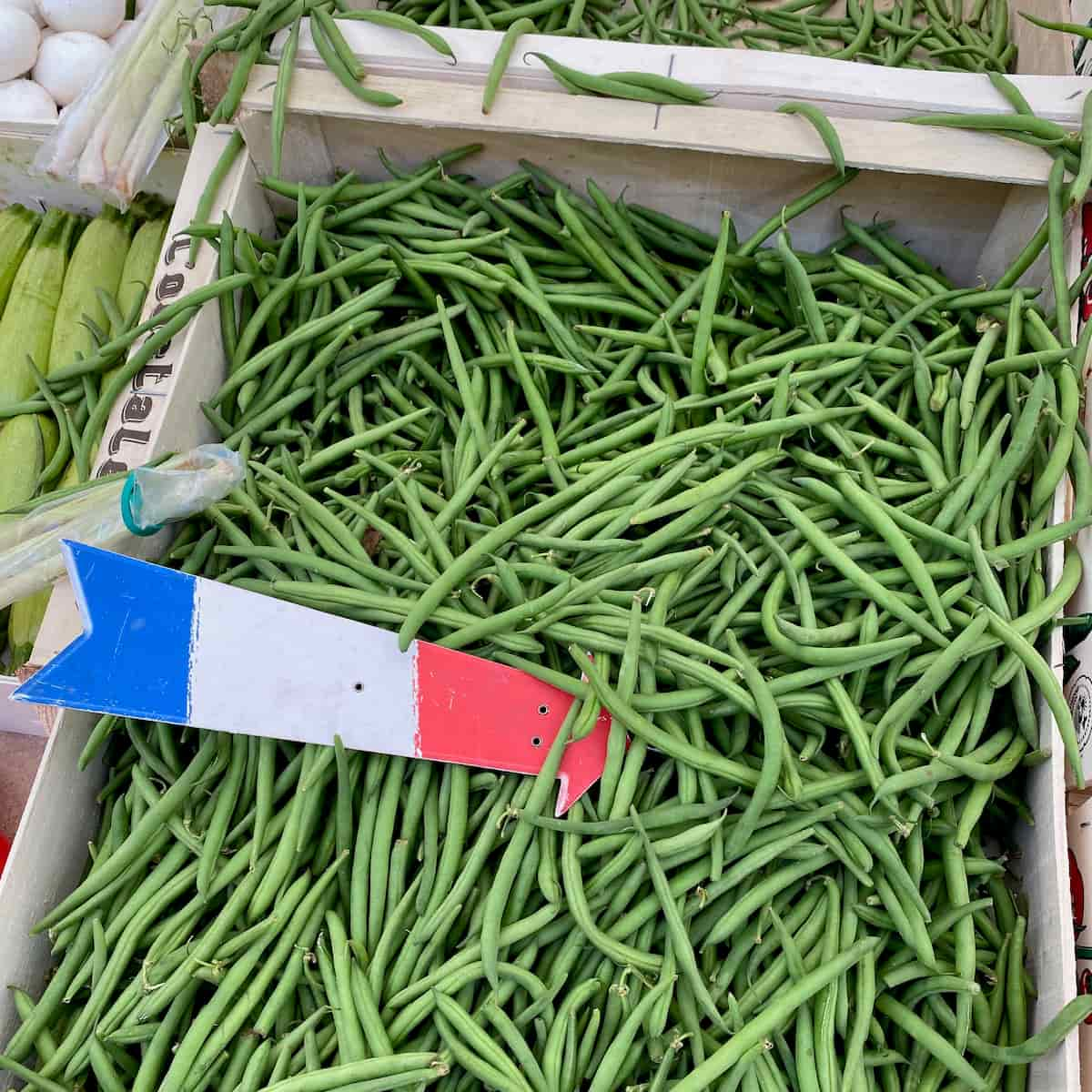
Season
In France, fresh green beans, called haricots verts (pronounced 'arri-kho ver'), are in full season in summer between July to September.
From Autumn to Spring, the best imports out of season are mainly from Spain and Italy. Those from Kenya the rest of the time are easier to find in all supermarkets, although they are more expensive.
Their History in France
Green beans were around 7000 years ago in the Americas and only came to Europe thanks to Christopher Columbus on his second voyage in 1493.
They didn't arrive in France until 1597, which means they're not really French! Like for other fruit and vegetables, it was thanks to Louis XIV who was eager to grow more with help from his botanist, La Quintinye at Le Potager du Roi in Versailles.
Today they're grown mainly in regions of the Loire, the Rhône and the Morbihan, Brittany. According to the French Ministry of Agriculture, 425 000 tons were produced in France's Hexagone.
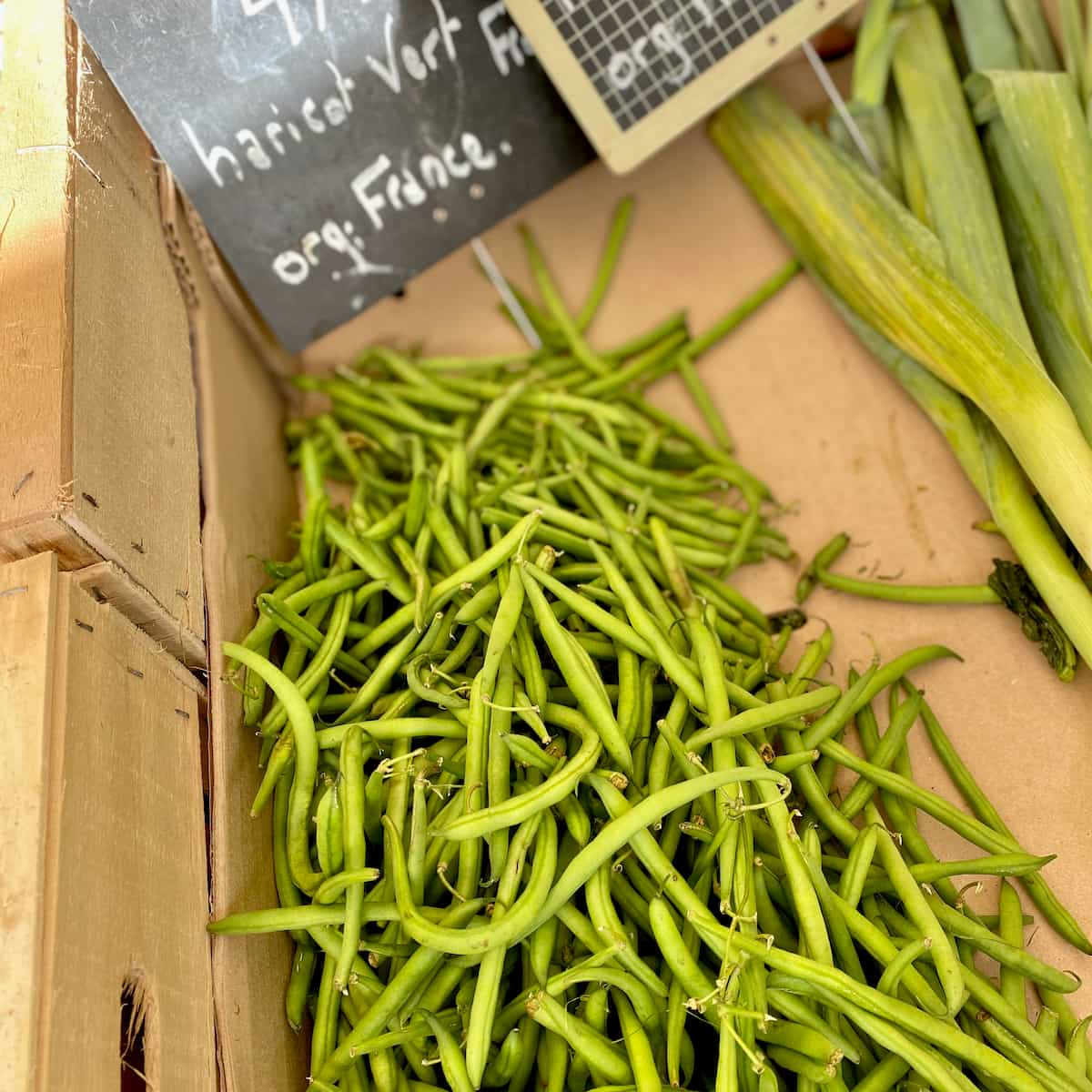
French Green Beans vs Green Beans
Green beans are also known as string beans and French beans but here's the surprise.
Haricots verts are simply green beans with nothing French about them.
French journalist, François Gaudry confirms in his culinary encyclopaedia, 'On va déguster France' (2021), that they were so called 'French' simply as a marketing trick to make them sound more attractive and fancy. So, much that I personally want to call them français for the sake of my French food blog, I can't claim that they are at all.
Perhaps the main confusion online on the varieties arises from their size, as in France we like them long and thin whereas in America they tend to be bigger. However, we also have them big here too! It's just a more 'cheffy' thing to prefer them slender as they tend to have more flavour and so they are harvested before they grow any thicker.
What are the Green Bean Varieties?
There are two main varieties, according to Larousse Gastronomique:
- haricots filets: includes le fin de Bagnols (extra slim), le triomphe de Farcy (extra green) and le violet (green and purple spots, less known);
- haricots mange-tout: these start off classed as haricots filets when harvested young, but left to grow become large and thick. Includes les haricots beurre, so named for their buttery yellow colour. These are particularly popular here as even more juicy as the green but less known outside France.
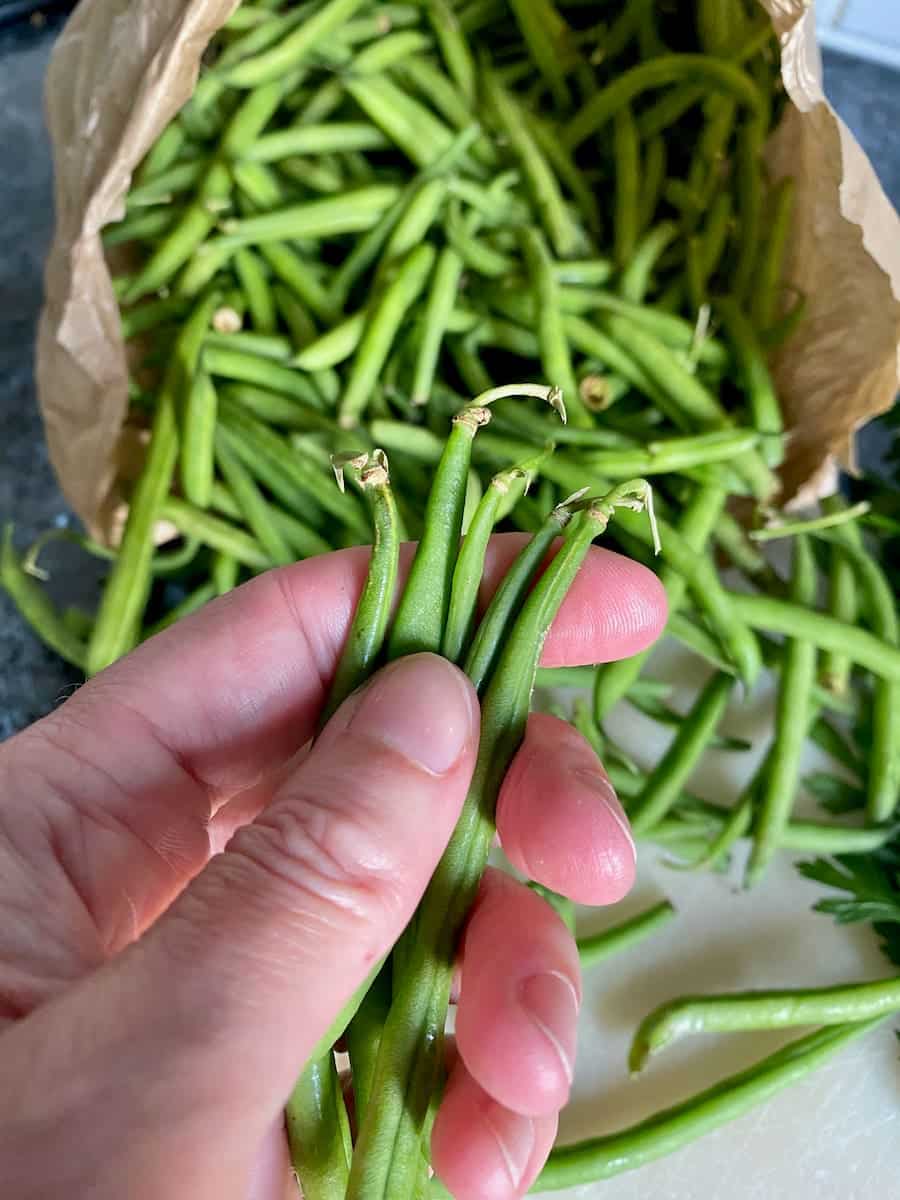
Nutrition and Tips
Although they can be eaten raw, green beans are always cooked in France and, if served cold in a salad, are pre-cooked. All the more reason why we should cook them well, in order to preserve their nutritious benefits.
They contain mainly water (90-95%) and are a good source of fibre with traces of vitamins K, C, B, and manganese.
As they are a vegetable with a lot of starch (see it coat the hob when cooking them in the water), green or string beans are also considered a good carbohydrate. Hence the feeling of being satisfied after eating them.
If freezing them, blanch them first in boiling water for a couple of minutes then leave to cool before storing for up to 3 months in the freezer.
Always choose the greenest and freshest without any scars and consume them as soon as possible.
How to Prepare Haricots Verts
Preparing them couldn't be simpler. Just tear off the end stem tip or grab a few together and trim them. Remove any brown ends and tweak off the bottom tail if you want to be fancy.
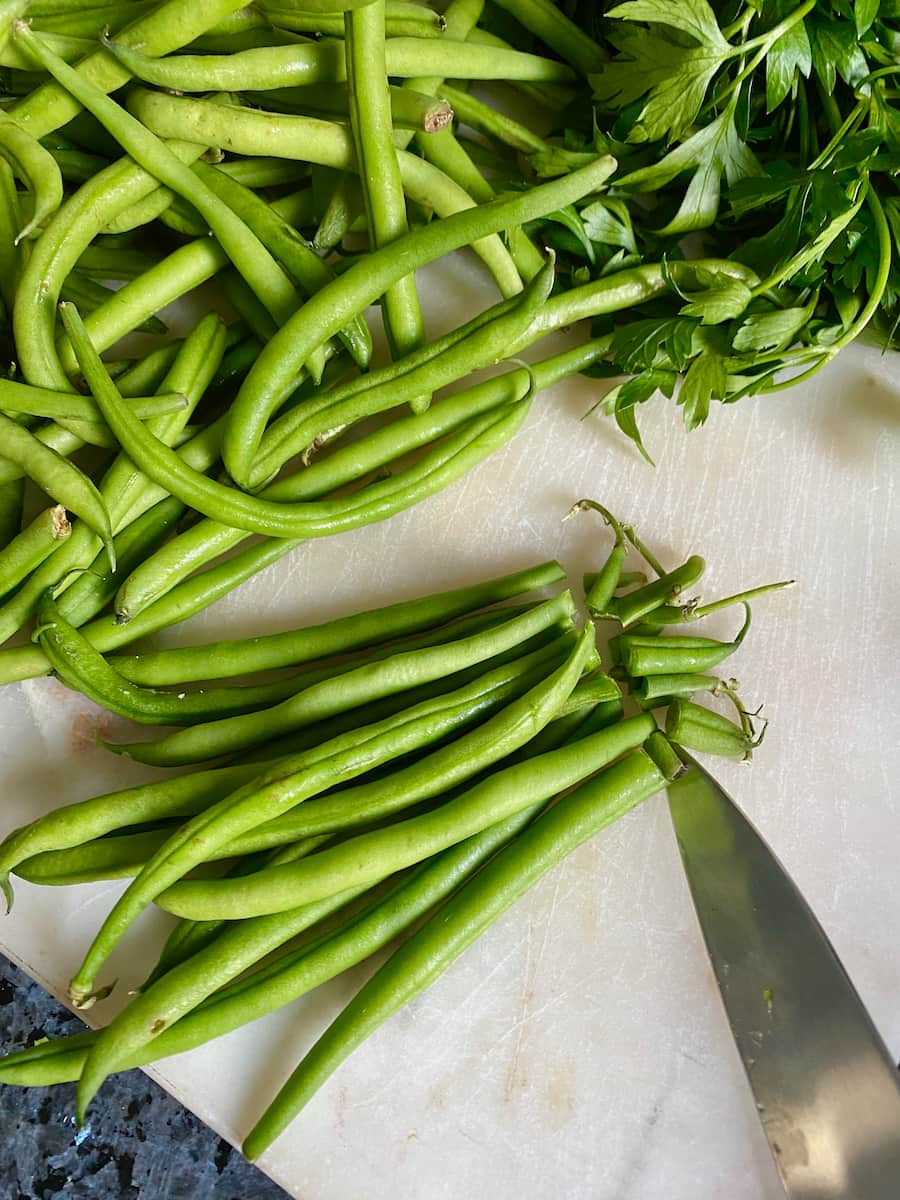
What are French-Style Green Beans?
Funnily enough, this is not something we see a lot in France but French-style or French cut refers to green beans being cut horizontally. This makes extra thick beans more slender and French looking, is that right?
Best Way to Cook French Green Beans
The best way to cook fresh green beans is to retain their vitamin benefits and green colour. This means to avoid overcooking - there's nothing worse than grey looking beans that not only look anaemic but are soggy and have no flavour! In this case, tinned beans are better.
In his book, Les Couleurs de la Cuisine (2018), food scientist Raphaël Haumont debunks the method used traditionally the world over by chefs cooking green beans à l'anglaise. The vegetables are cooked in a huge pan of highly salted boiling water, then plunged into an iced bath to "stop the cooking and fix their green colour".
He confirms that scientifically, this method, à l'anglaise, only stops the cooking and doesn't fix its green chlorophyll colour.
Instead, his best method to keep them firm but cooked (al dente tender), retaining their fresh green colour is to cook them in unsalted simmering water (80°C is enough to cook the fibres) for only a few minutes. Depending on their size and slenderness, this is anything between 3-10 minutes.
Instead of salt, a pinch (¼ tsp) bicarbonate of soda (baking soda) is added to fix the colour and speeds the cooking.
Do I Need to Plunge Green Beans into Cold Water?
There's no need to plunge them into an ice bath. Auguste Escoffier also says this, as he explains just how important it is to cook haricots verts to perfection in his Guide Culinaire.
Typically French, we can't just serve green beans on their own. They need to be dressed. So transfer to a frying pan with a little olive oil and sauté them with some finely chopped garlic or shallots, sesame seeds and fresh herbs.
Better still, sauté them in garlic in my recipe below.
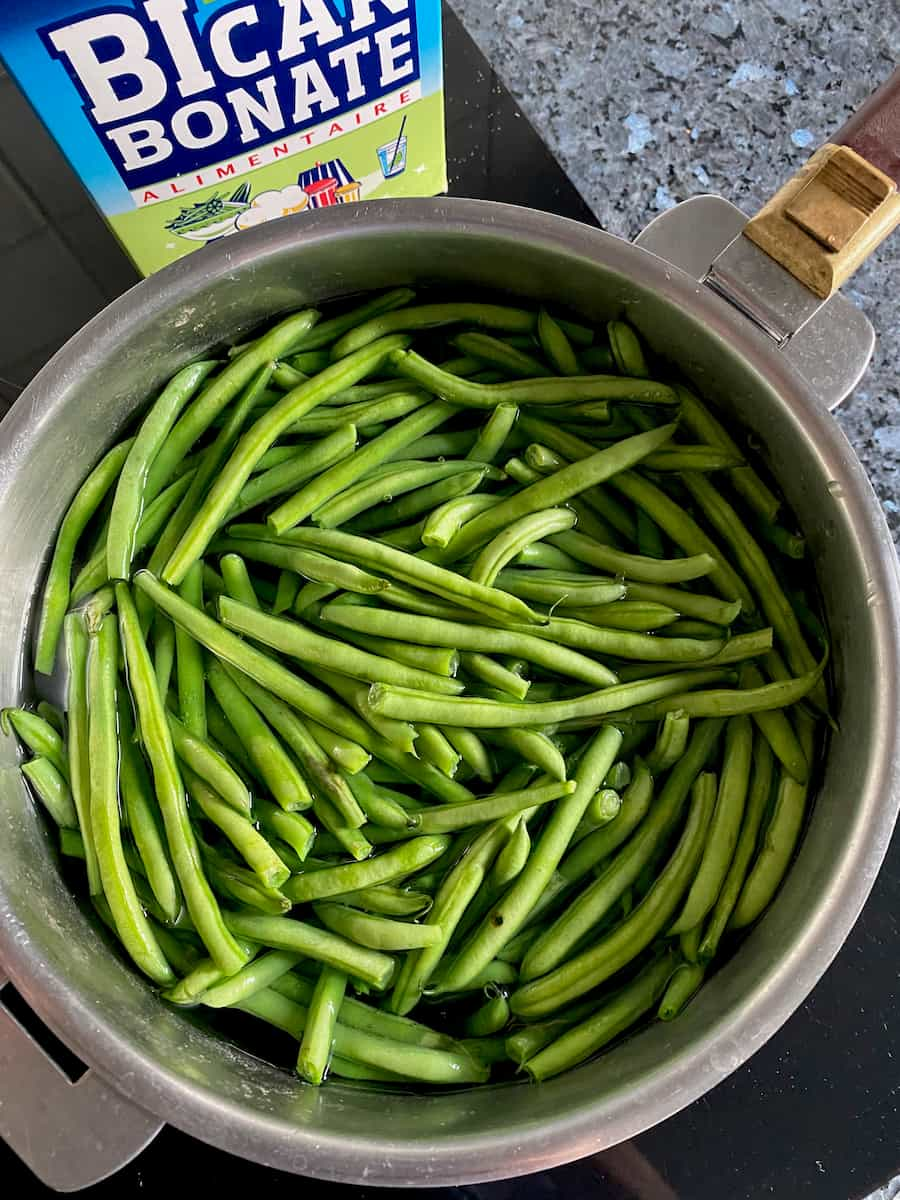
Do I add Lemon or Vinegar to the Cooking Water?
Likewise, adding some acid with lemon and/or vinegar to the cooking water is another traditional method used for green beans but not good for keeping the vegetables' green colour.
If you watch beans cooking in a pan of acidic water, the vegetables turn brown so avoid using either.
Recipes with Green Beans or as a Side
The following healthy recipes include fresh green beans with suggestions for delicious accompaniments as a side dish - from simple to fancy dishes.
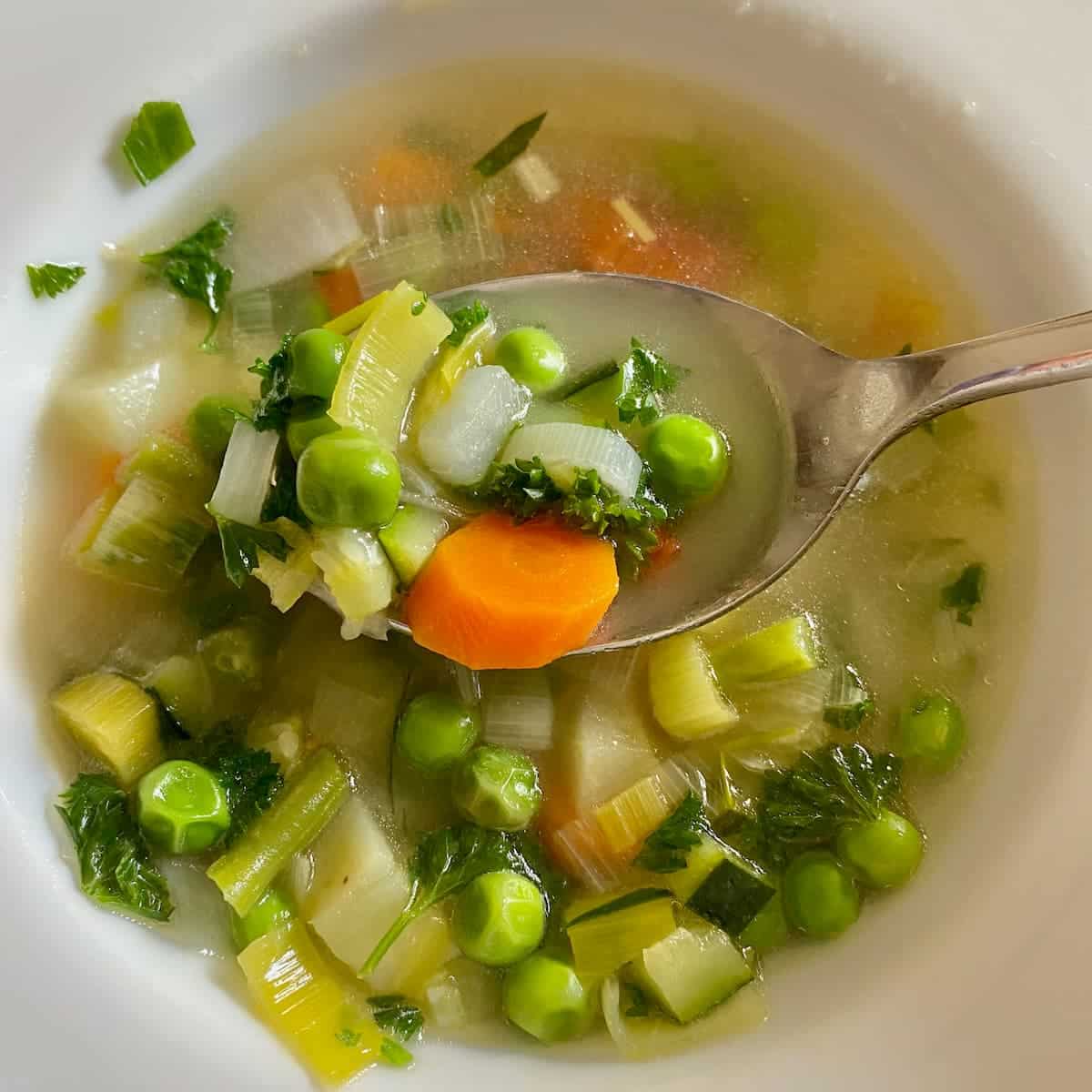
Add them chopped to this delicious Pure Vegetable Soup, which relies on the freshest of veggies and a short cooking time to preserve their nutrients.
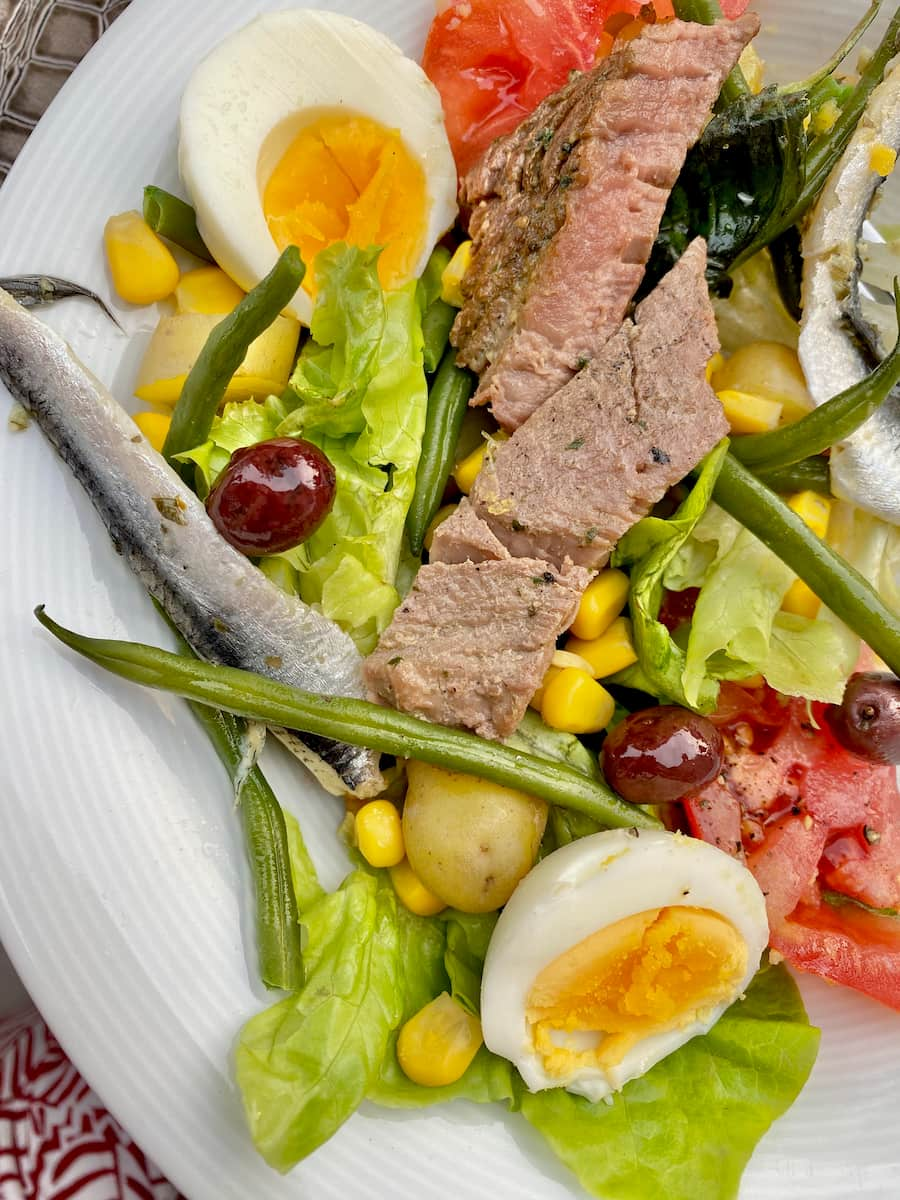
In a classic Niçoise Salad - although did you know that the authentic salad from Nice doesn't include green beans or potatoes? Add them if you prefer but just so you know!
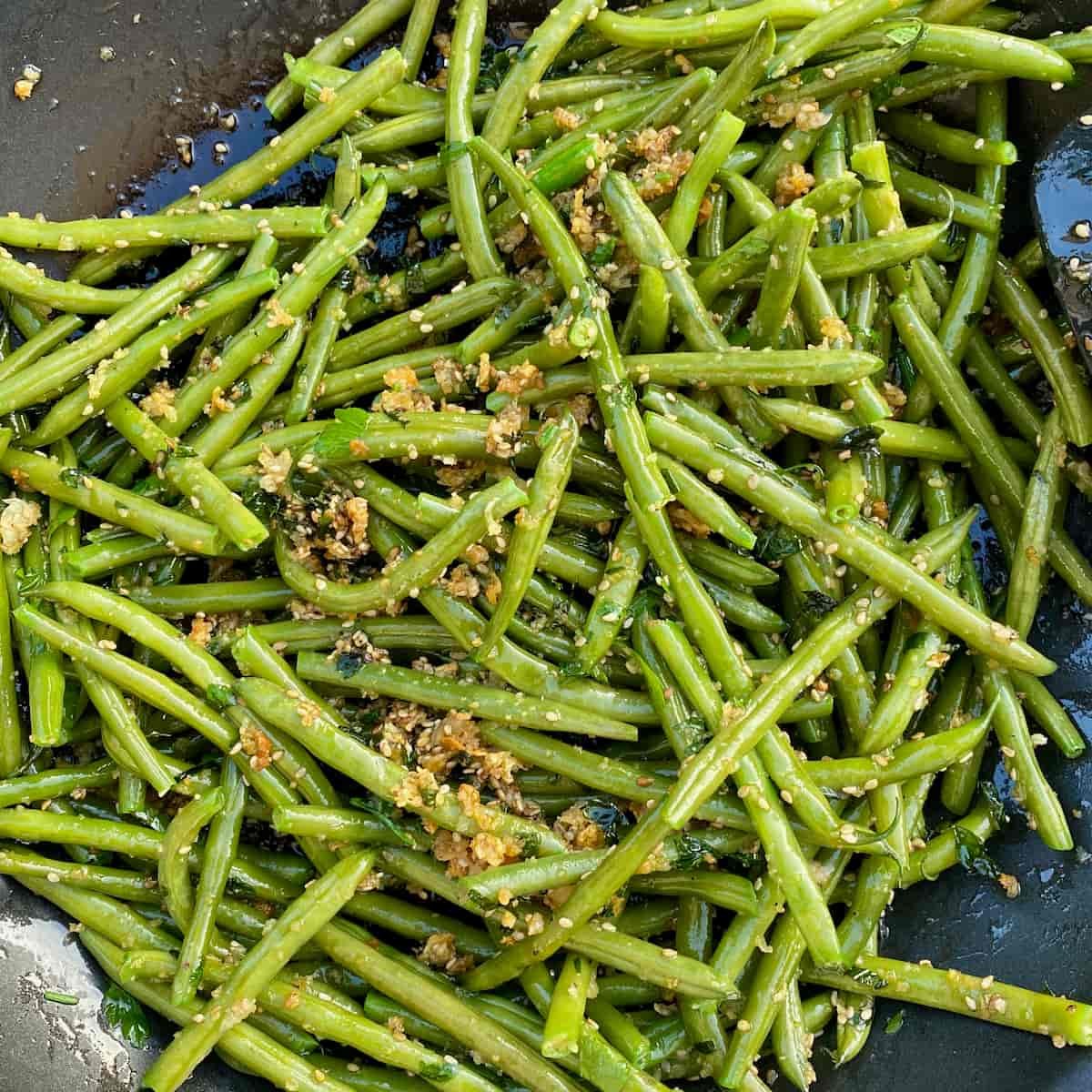
Sautéed green beans is the most versatile, perfect side dish to many dishes. Glossy and coated in garlic, toasted breadcrumbs, seeds and fresh herbs, the whole lot is seasoned and goes with so many French dishes.
Enjoy as a side with delicate fish such as John Dory. Sauté beans in a little butter, chopped fresh parsley and chives and add some fresh peas for a taste of summer. I recommend omitting the garlic as flavours are subtle and fresh.
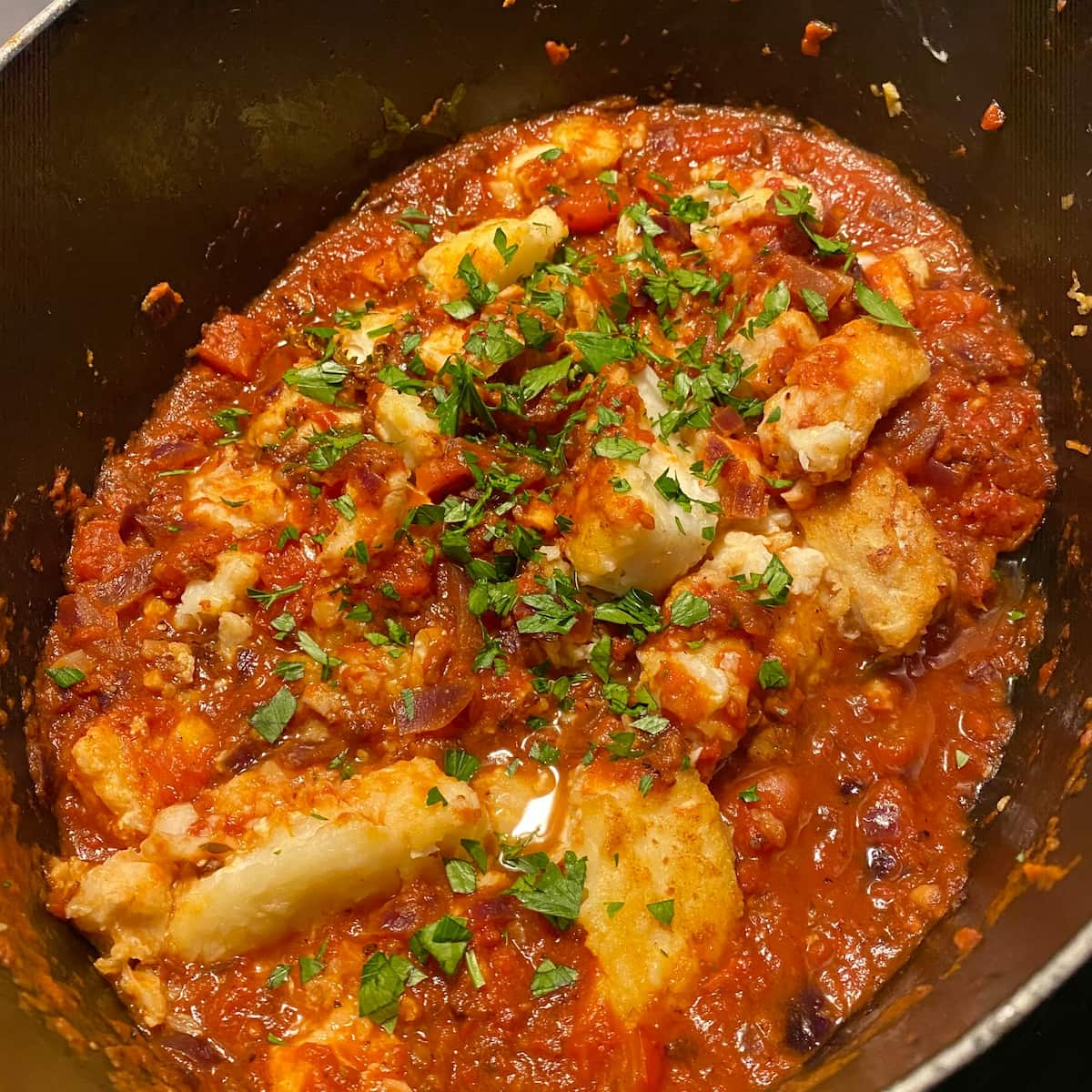
Likewise, sautéed green beans are great as a side with more gutsy fish dishes, such as Monkfish Stew (Lotte à l'Armoricain). The combination with the tomatoes is ideal.
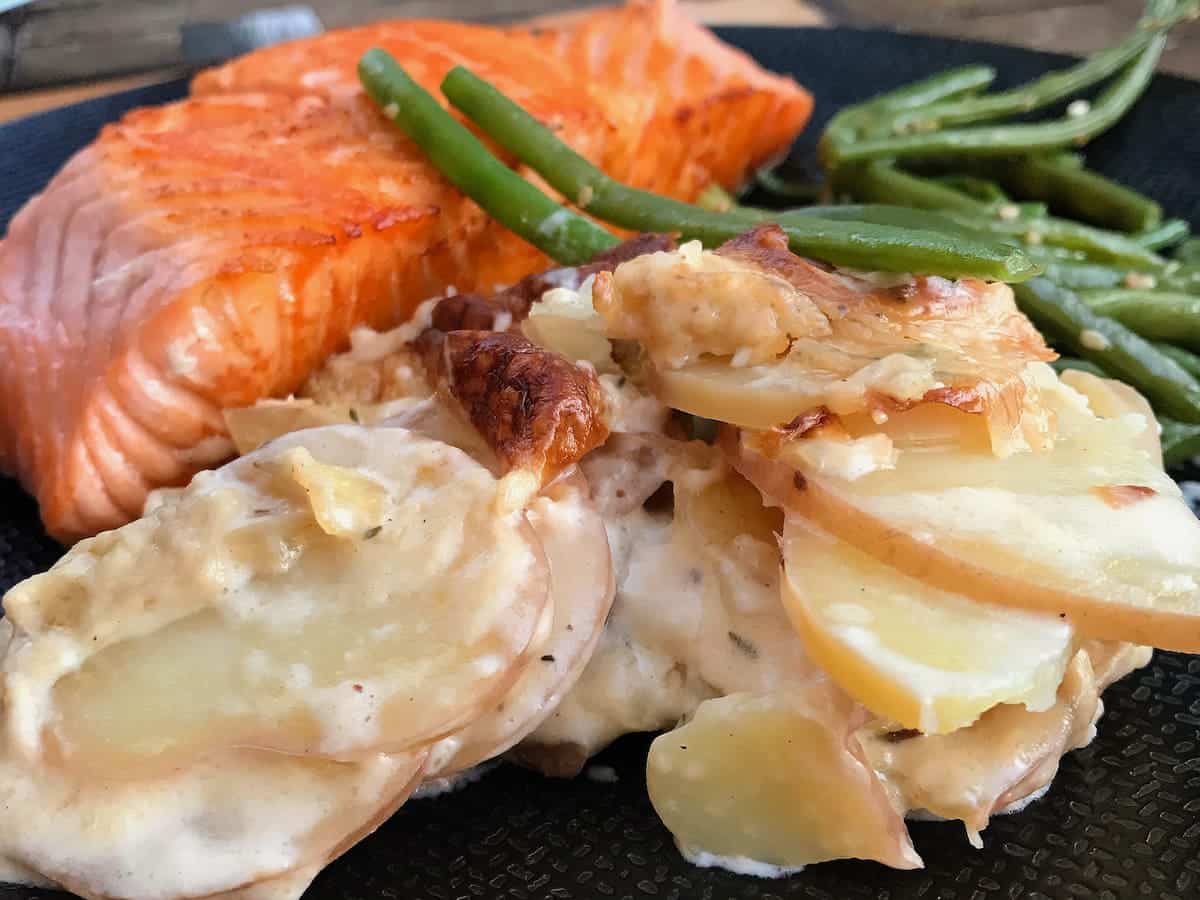
Also great with salmon fillets. Serve with another side of creamy gratin dauphinois, which is lightly smoked using Lapsang Souchong smoked black Chinese tea.
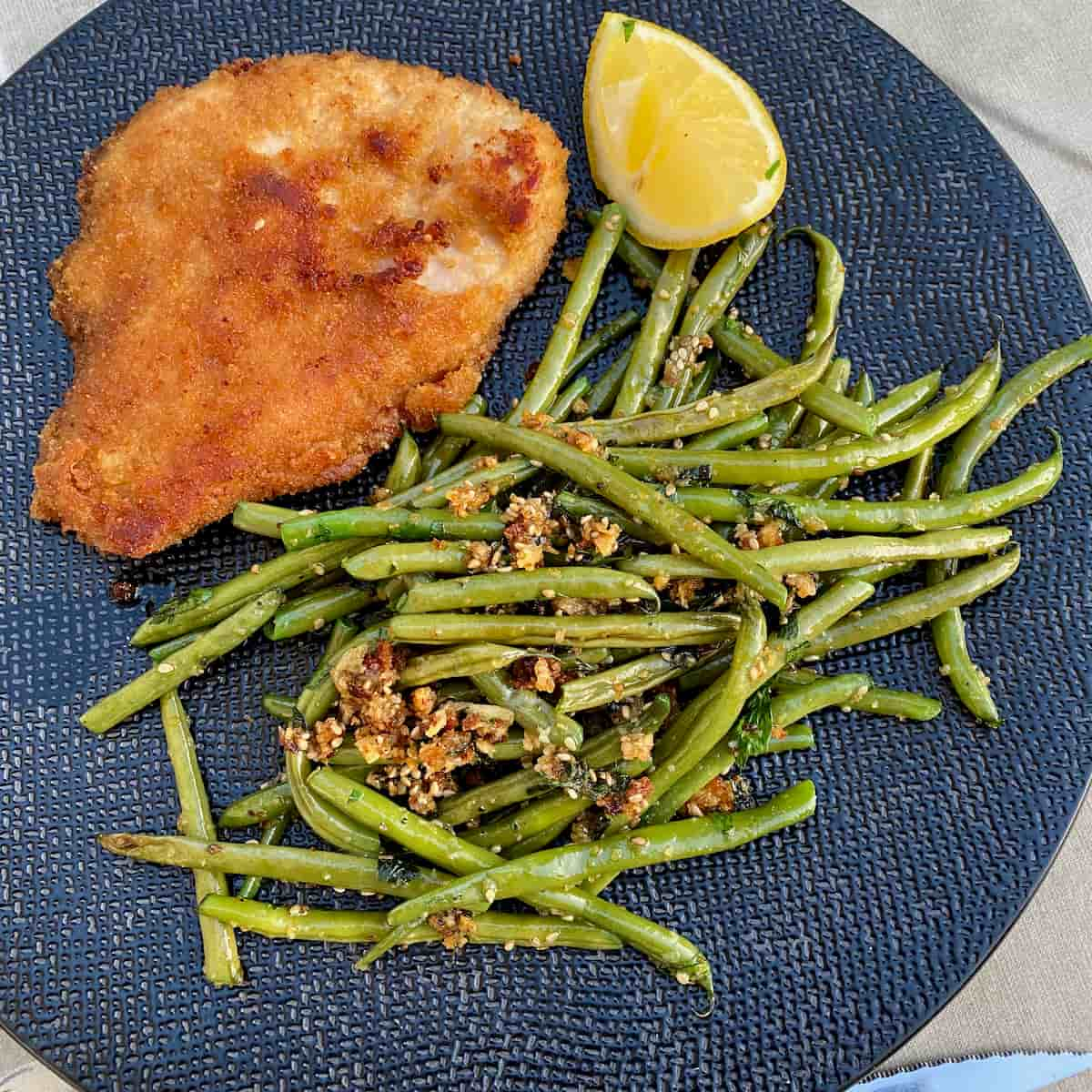
Not just with fish, fried French style green beans are super with poultry. We love them with breaded turkey, chicken or pork.
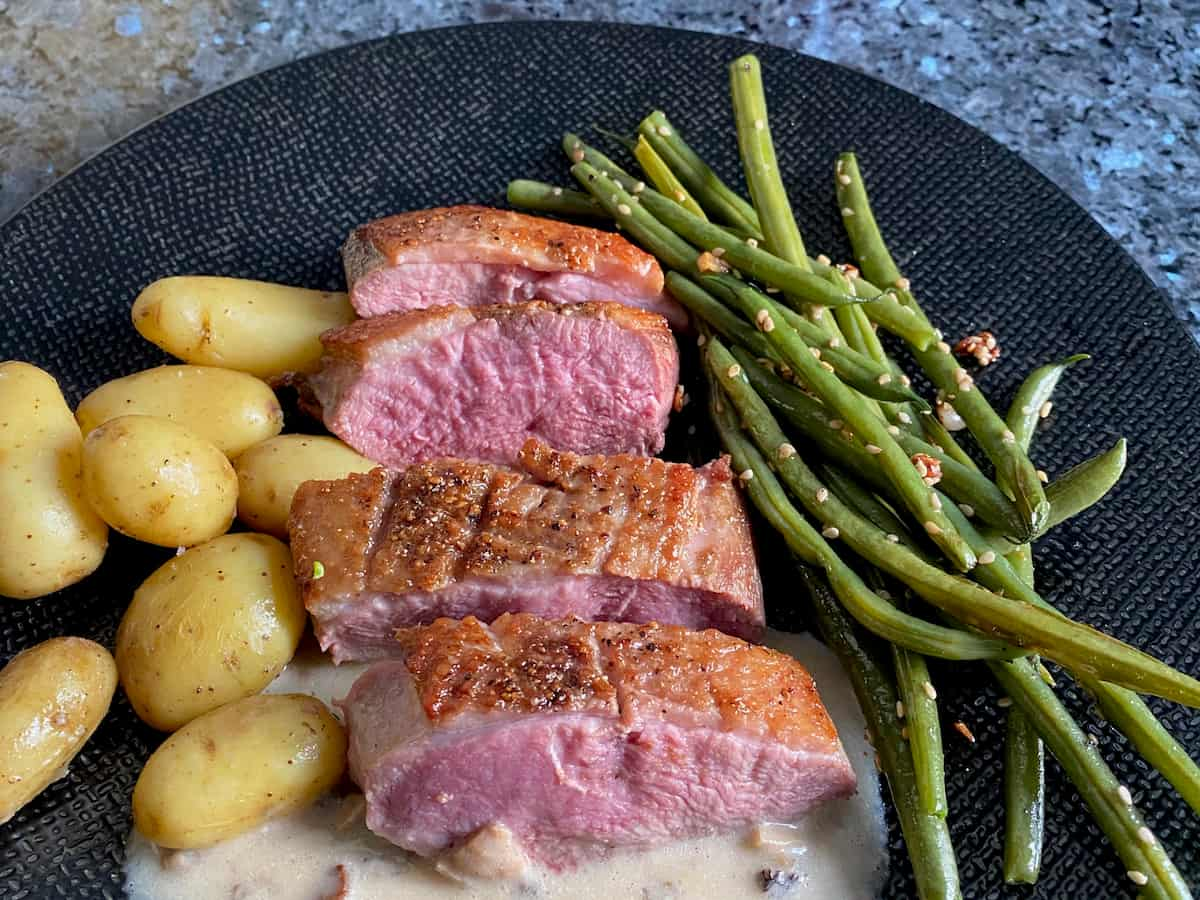
Plus serve with tender duck breasts, sliced to reveal their perfect pink.
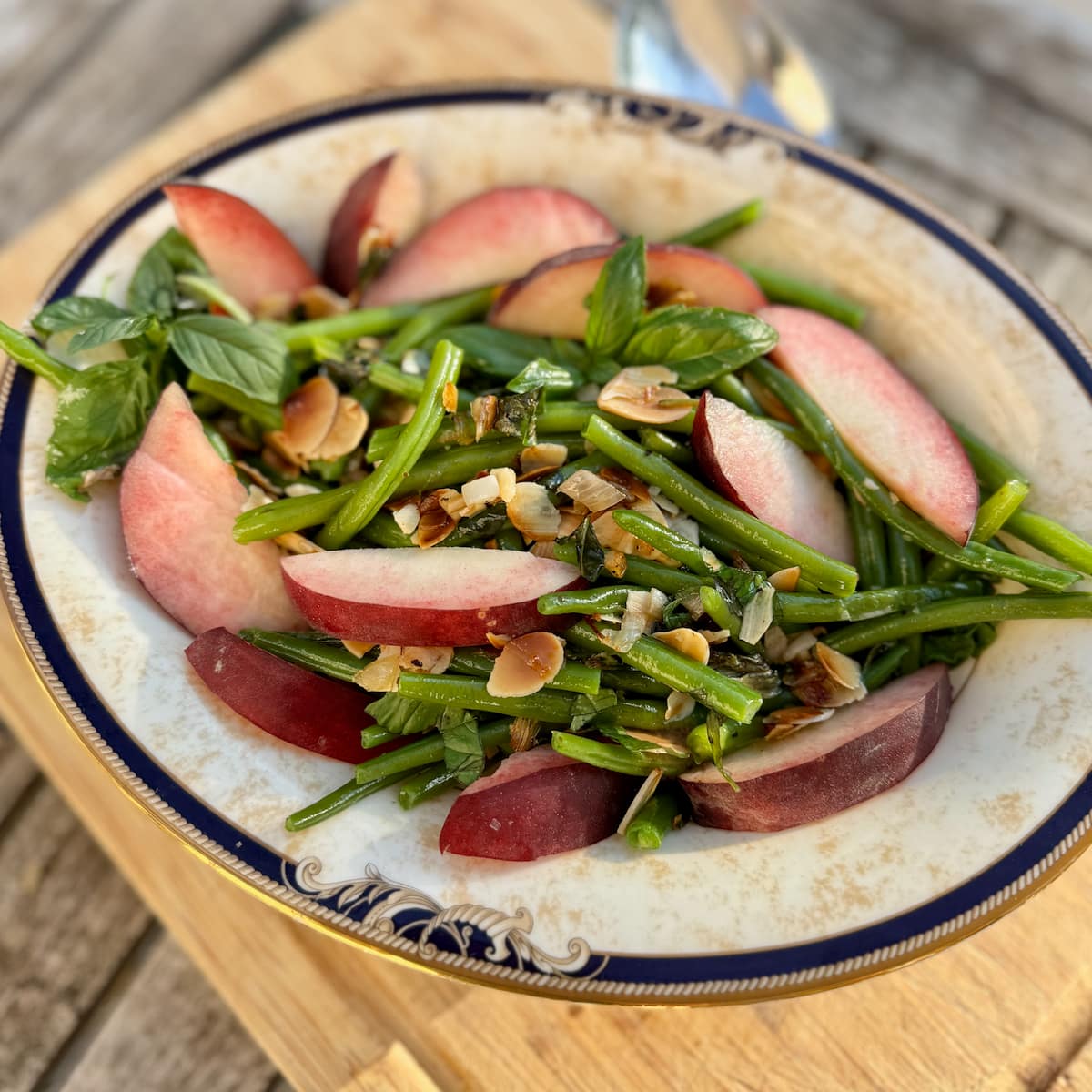
Last but certainly not least, is the most unique French beans recipe - with peach! It's the simplest way to jazz up a simple side or salad and transform them into something from a Parisian restaurant.

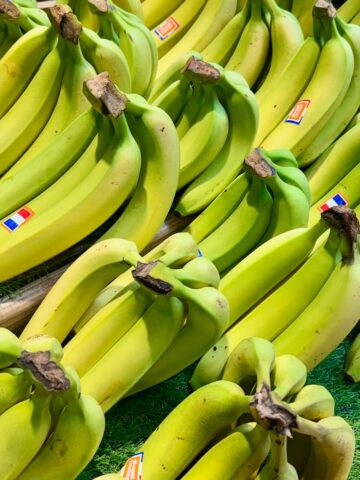
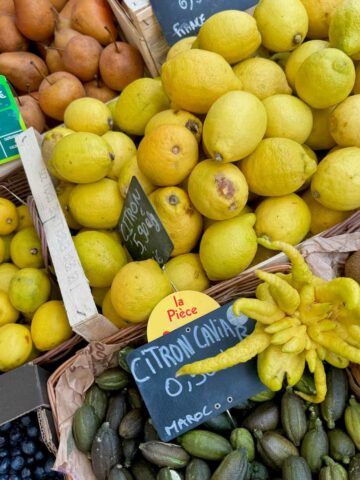
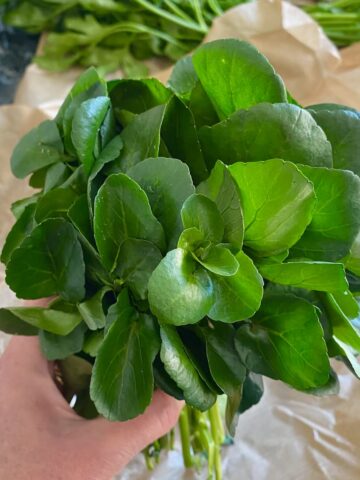
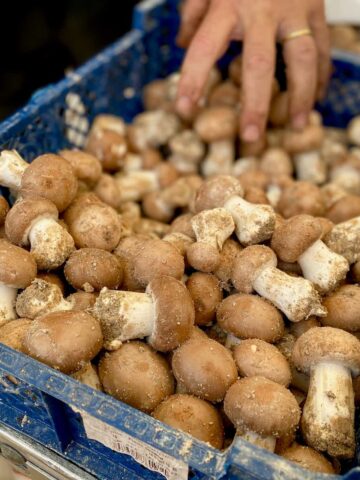

Please leave a comment